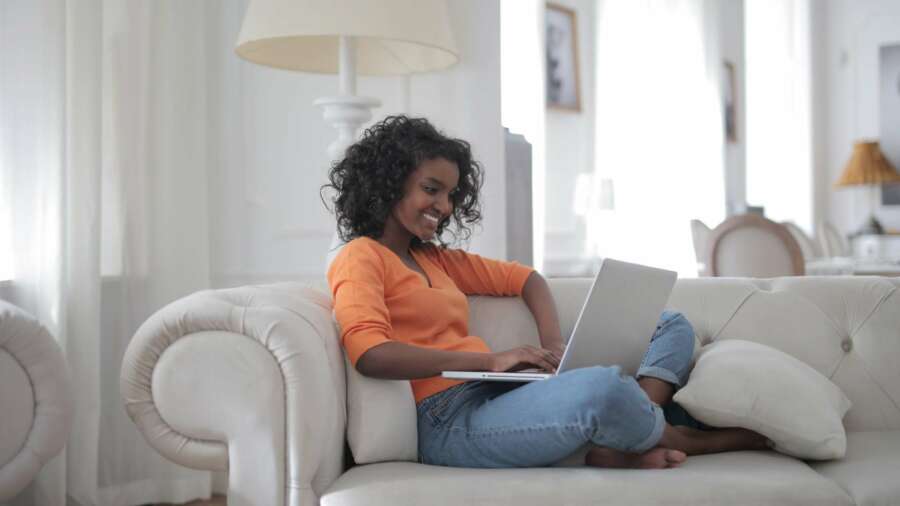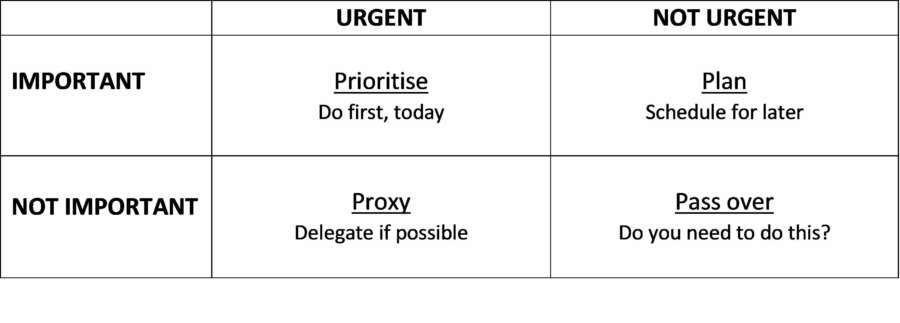
By Rick Hughes, author or ‘Get a Life! Creating a Successful Work-Life Balance’ and Head of Service for the University of Aberdeen Counselling Service.
How working from home has changed our work-life balance
A recent survey from the Institute of Directors of nearly a thousand company directors revealed that nearly three quarters said they would be keeping increased home-working after coronavirus
For some, this will trigger glee, for others it will trigger glum.
As Coronavirus restrictions forced a sea-change in flexible working most of us adapted in some way, simply because we had no choice. We were forced into it. This was a massive change. And yet there was one over-arching commonality – we were all in it together and we were all progressing and/or regressing with each-other. We might have become more physically isolated, yet we came together to share this state of flux, ambiguity and largely economic and social nightmare.
In 2019 when I was researching work-life balance, I identified up to 45 variables which potentially impacted work-life balance and I clustered these under nine broad themes which I called the ‘9 Ps’. As we face a new normal of increased home-working, they seem even more pertinent today.
- Personal development (having fun, expressing creativity, seeking adventure)
- People (our relationships at home and work),
- Productivity and Performance (working smarter not longer)
- Professional development (our purpose and meaning at work and career development)
- Psychological and Physical wellbeing (out mental and physical health)
- Practical and Physical (managing personal finances, our physical home environment)
In this article, I’d like to draw from this and share some thoughts about how we can not only regain our work-life balance but use it to forge a brave new way of being and champion the new opportunities ahead of us.
Landscape scanning
We’ll never know where we’re going if we don’t know the point at which we start. How have things changed for us? What’s on our agenda these days which is different to pre-Covid? A simple personal SWOT analysis can help to flesh out our current situation – Strengths, Weaknesses, Opportunities and Threats. It’s important to review this from a whole-of-life perspective absorbing home and work demands, including the personal and the professional self.
Eliminate conflict
Conflict emerges when we have competing demands. Despite the best efforts of those able to multi-task, we can’t do everything at once. We need to learn to prioritise, plan, delegate or ditch. A helpful model to use is the Eisenhower Matrix, popularised by Steven Covey in his best-seller ‘Seven Habits of Highly Effective people’. Essentially, we’re seeking to determine what’s Urgent and what’s Important… and crucially, what’s not.

Adapted by Hughes R (2020) Get a Life! Creating a Successful Work-Life Balance, Kogan Page
Myth of perfectionism
Many of us strive for perfectionism at home and work. Yet this often sets us up for immediate failure as we seek the impossible dream. Insodoing, this makes us clamour to do even better next time. What most of us may have learnt during Covid restrictions is that we’re actually doing OK. We’re good enough. Many of us start out seeking to be the perfect parent to our children until it dawns on us that being a good enough parent is more helpful, realistic and achievable.
Spotting signs of stress
Much conflict emerges when we feel stressed, when our coping resources cannot deal with the pressures around us. But often stress creeps up on us undetected until we lash out, freak out or crash out. Then the damage is done. Covid restrictions have encouraged all of us to look out for each other and it’s helpful to spot signs of stress with those in our lives at home and at work. It’s often easier to spot signs of stress in others than ourselves, so if we all do it, chances are someone will give us a timely heads-up. The following ABCDE stress indicator illustrates the key warning signs.
| Affective/emotional | Behavioural/actions | Cognitive/thoughts | Differences | Environmental |
| Anxiety/tension | Erratic behaviour | Over-worrying | Appetite changes | Avoiding people |
| Irritation/angst | Sleep pattern changes | Depression/low-mood | Weight gain/loss | Increased socialisation |
| Anger/aggression | Sweating/Palpitations | Negative-thinking | Exercise changes | Increased alcohol |
| Frustration/annoyance | Unusual behaviour | Lack of perspective | Jitters/flushes | Rebellious |
| Moodiness | Disorganised | Disorganised/erratic | Back/neck pain | Mistrustful |
| Panic attacks | Argumentative | Poor decision-making | Cold sweat/shakes | Home/work apathy |
| Impatience | Aggressive driving | Increased mistakes | Skin conditions | Excessive shopping |
| Tearful | Lack of energy | Poor concentration | Migraine/headaches | Work absences |
| Restless/fidgety | Absent-minded | Obsessiveness | Nail-biting/hair-pulling | Avoiding hobbies |
| Uneasy/uncertain | Late into work | Neuroticism | Forgetful | Increased risk-taking |
Source: Hughes R (2020) Get a Life! Creating a Successful Work-Life Balance, Kogan Page
Managing boundaries

A crucial factor associated with working from home involves the art of juggling. We need to be adaptable and often in the moment. We might like the structure and order of fixed boundaries, but sometimes these might need to be more permeable and flexible. Recently I was shopping for a shielding neighbour and frustratingly was delayed due to queues. This resulted in me joining a MS Teams meeting from my car on my mobile in a Tesco car-park. My colleagues were more interested in my contribution rather than my location (once they got used to folk pushing trollies behind me).
Disinhibition effect
Working from home for most us means we have more of these audio-visual meetings via MS Teams, Zoom, Google Hangouts etc. By doing so, we’re getting to see and sharing more of our respective home spaces and new work environments with our work colleagues. This is often a lovely new ice-breaker as we comment on the cat clambering up on the sofa next to us or marvel at the array of saucepans dangling from the kitchen pulley behind us. We’re becoming a bit more human again.
Switch-off and disengage
One of the dangers associated with working from home is the premise that we’re always available and always ‘on’. I can hear echoing across the land, one partner saying to another ‘have you not finished work yet?’. The beauty about email/contact alerts on our mobile communication devices can be great when in work, but a curse when not. These fancy devices really do have the facility to mute and switch off… which is a lesson to all of us too. Even my laptop tries to educate me when I press the Home and then the Power button. It gives me three words of wisdom – SHUT-DOWN, SLEEP, RESTART.
Health and Wellbeing
This applies to both physical and mental health. Pre-covid, I used to go for a swim before work and a walk at lunch time. Now my mobile step-monitor labours to get into double-figures. Especially as the nights drawn in, we really do need to factor in some physical exercise and fresh air. Similarly, as with the ‘spotting signs of stress’ paragraph above, we need to look after our mental wellbeing. We need a break, we need rest and relaxation, we need to take time out and breathe. We might ask others ‘How are you?’ but this needs to start with ‘How am I?’ It’s good to talk. If we’re getting down or anxious, speak to someone – family, friend, work-colleague, counsellor or coach.
Dream team
Many of us are feeling increasingly isolated working from home. We miss our work-colleagues. We miss being in a different work-environment. We miss the banter and the chat. It can be easy to collude with the hermit-mentality when we’re ‘stuck’ at home, but home should be our launch-pad for a different trajectory of communication. I’m speaking to my neighbours more (albeit over a hedge and wearing a mask), I’m calling friends and relatives I wouldn’t normally, I’m checking in with work colleagues to discuss how best to make a Chicken Kiev. We all have loads of people to connect with. It’s just a question of identifying them and doing it.
Fake commute
Whilst many of us are loving the fact we’re not having to endure the commute to and from work, others find now that this gave us an important ‘gear up’ and ‘decompress’ to demarcate work and home lives. Increasingly more people are taking a ‘fake commute’ before and after work from home. This might mean a walk round the block but it could also mean factoring in some routine important ‘me-time’. The point being we’re building in, say, half an hour at the start and end of the day when we engage in something that buffers the home and work zones.
Just say no
Arguably more so when working from home, we need to develop the skills to say NO when we probably say YES. We have limitations and need to understand our capacities, appreciating the extra demands on us when peppered by home needs too. It’s about appreciating the need to be more assertive, not as a sign of weakness, but rather a strength. The Eisenhower Matrix, above, is a great way to be more discriminate about our time-management, prioritisation and capacities.
Autonomy
Working from home probably gives us more freedom and autonomy than before. And yet with more freedom we can get the sense that we have less control. However, perhaps ironically, freedom gives us the opportunity to choose. And with choice we take control. We’re also largely being trusted more to ‘do the work’. We might not have our manager or clients in view and breathing down our necks. Working from home requires trust and respect on both sides. This is evolving the concept of compassionate leadership where we need that management-by-empathy to leave us alone and let us get on with our work. No more micro-management.
Digital detox
I suspect that without Information Technology, few of us would be able to work from home. Our computers, tablets and mobiles have become our fifth limb. And yet this limb has the capacity to cripple us, physically and mentally. We need to use it with caution and rest it so as not to overdo it. The Pomodoro technique gives us one option to work in short-time chunks. Or we plan our day with frequent and routine breaks, even if it’s to make a cuppa. I’m enjoying retreating to my beefy if not dog-eared Chambers Thesaurus, rather than searching on the internet. What more traditional means can you use as a replacement for your computer? Likewise, whilst we might feel that social media and watching hours of news broadcasts constitutes a break, think about the stress overload this can create. Conducting a simple cost/benefit analysis can be sobering. Do we need social media and if so, how much is enough?
New normal
We’re all trying to find the ‘new normal’ with increased working from home but it can feel reassuring to see this as the ‘new not-normal’ and perhaps simply the ‘new way’. Even casting our minds back over the last eight months or so, we’re discover we have probably settled into our new way, maybe even finding better ways of being and doing. This is at the heart of personal resilience. The more we point our bow into the wind of opportunity the faster we will sail through future choppy waters. It’s about taking a solution-focused approach rather than a problem-management one.
In conclusion, we’re all evolving our unique blend-together of our home and work lives, seen more of a work-life ‘blend’ rather than a ‘balance’. A balance suggests a more linear see-saw and yet the blend appreciates flexibility, dexterity and adaptability.
But I think we should pause and give us a congratulatory pat on the back. We’ve been doing the best we can and we should be proud of it. The future’s about appreciating and acknowledging this whilst adapting to our new and exciting way of being and doing.
https://www.iod.com/news/news/articles/Home-working-here-to-stay-new-IoD-figures-suggest


